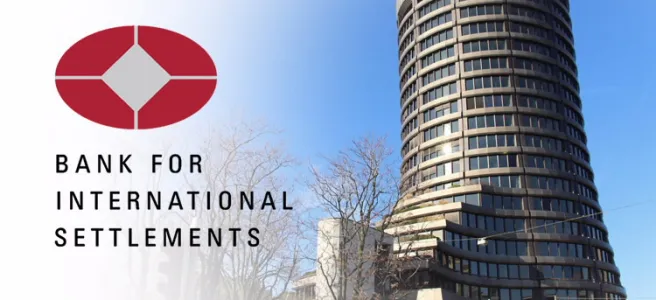In the rapidly evolving landscape of digital currencies, stablecoins have emerged as a promising financial innovation. These digital assets are designed to maintain a stable value, often pegged to traditional fiat currencies like the US dollar. However, the Bank for International Settlements (BIS), a respected institution in the world of global finance, has recently cast doubt on the reliability of stablecoins as a store of value. In this article, we delve deep into the concerns raised by the BIS and explore the implications for the future of stablecoins.
Understanding Stablecoins
Stablecoins are a category of cryptocurrencies that are distinct from volatile cryptocurrencies like Bitcoin. While Bitcoin’s value can experience extreme fluctuations, stablecoins are designed to provide price stability. This stability is achieved by backing the stablecoin with reserves, such as fiat currencies or commodities. The idea is to create a digital asset that can serve as a reliable store of value and a medium of exchange in the world of digital finance.
The Appeal of Stablecoins
Stablecoins have gained popularity for several reasons. They offer a bridge between the world of traditional finance and the digital realm, making it easier for people to engage with cryptocurrencies. Businesses and individuals can use stablecoins for various purposes, including cross-border transactions, trading on cryptocurrency exchanges, and as a hedge against market volatility.
The BIS Perspective
The Bank for International Settlements (BIS) is often referred to as the “central bank for central banks.” It plays a crucial role in coordinating international financial stability and providing a platform for central banks to exchange information and collaborate. Given its stature, the BIS’s views on stablecoins carry significant weight in the financial industry.
The BIS has expressed doubts regarding the reliability of stablecoins as a store of value. This skepticism is rooted in several key concerns:
- Lack of Regulation: One of the primary concerns voiced by the BIS is the absence of comprehensive regulatory frameworks for stablecoins. Unlike traditional financial institutions, stablecoin issuers operate in a relatively unregulated space. This lack of oversight can lead to potential risks for users and the broader financial system.
- Inherent Risks: The BIS has pointed out that the very design of stablecoins, which involves backing them with reserve assets, can introduce risks. If the assets backing the stablecoin lose value or face liquidity issues, the stablecoin’s peg to a specific value may become unreliable. This could undermine the stability that these digital assets are meant to provide.
- Disruption to Monetary Policy: Stablecoins could disrupt the monetary policies of central banks. As stablecoins become more widely used, they may impact the control central banks have over their own currencies. This can lead to concerns about financial stability and macroeconomic management.
The Tether Controversy
The concerns raised by the BIS are not without precedent. The world’s largest stablecoin, Tether (USDT), has been the subject of controversy and scrutiny. Tether has faced allegations of not having sufficient reserves to back its stablecoin tokens fully. This has led to doubts about the stability of Tether and the potential implications for the broader cryptocurrency market.
Implications for the Cryptocurrency Ecosystem
The BIS’s doubts regarding the reliability of stablecoins have broader implications for the cryptocurrency ecosystem. Here are some key points to consider:
- Increased Regulatory Scrutiny: The concerns raised by the BIS are likely to lead to increased regulatory scrutiny of stablecoin issuers. Regulatory bodies around the world may seek to impose stricter regulations to ensure the stability and safety of these digital assets.
- Innovation and Development: The doubts expressed by the BIS may prompt stablecoin issuers to innovate and develop more secure and transparent systems. This could ultimately lead to a more reliable generation of stablecoins.
- Market Dynamics: As investors and users become more cautious about stablecoins, market dynamics may shift. It could lead to greater diversification in the types of stablecoins available, with a focus on those that are more transparent and resilient.
The Way Forward
The BIS’s concerns about stablecoins are a reminder that while digital currencies hold great promise, they also come with challenges that need to be addressed. It is crucial for regulators, issuers, and users of stablecoins to work together to establish a framework that ensures the reliability of stablecoins as a store of value.
The evolution of stablecoins is ongoing, and the industry is likely to see changes and improvements as it matures. The Bank for International Settlements (BIS) has played a valuable role in drawing attention to the potential risks associated with these digital assets, sparking discussions that will shape the future of stablecoins.
In conclusion, the BIS’s expression of doubt regarding the reliability of stablecoins as a store of value is a significant development in the world of digital finance. It underscores the need for comprehensive regulation, transparency, and innovation in the stablecoin space. As the industry grapples with these challenges, it is essential to strike a balance between fostering financial innovation and safeguarding the stability of the global financial system.
The Bank for International Settlements (BIS) expressed doubts regarding the reliability of stablecoins as a store of value, and the conversation it has initiated is likely to continue shaping the future of digital currencies.
